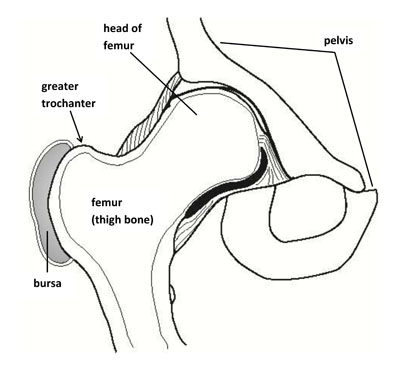TROCHANTERIC BURSITIS AND GLUTEUS MEDIUS SYNDROME
WHAT IS THE TROCHANTERIC BURSA?
A bursa is a normal membrane or sac of fluid. Humans have bursa all over the body and in the hip there is a large bursa over the outer (lateral) aspect of the hip bone. This bony prominence can be felt in just about everybody and is called the greater trochanter of the femur (thigh bone). Therefore, the bursa that sits next to this prominence is called the trochanteric bursa.
WHAT IS TROCHANTERIC BURSITIS?
When there is increased inflammation in a bursa, it is call bursitis.
WHAT ARE THE SYMPTOMS OF TROCHANTERIC BURSITIS?
The most common symptom of bursitis is pain along the outer aspect of the hip. The pain can be dull/achy, but also can be sharp. It often will radiate upwards toward the buttock and down towards the knee on the outside of the thigh. Patients commonly report that they cannot sleep on the affected side. When symptoms become severe, the patients often notice limping.
TREATMENT OPTIONS FOR BURSITIS?
Generally, trochanteric bursitis is treated successfully with conservative (non-surgical) measures. Every once in a while, a patient does not respond to these measures and then surgery can be considered.
Conservative options include:
Anti-inflammatories
Physical therapy exercises emphasizing core and gluteus medium strengthening
rest and activity modifcation
Injections - cortisone or PRP or stem cell
Surgical option includes:
Arthroscopic trochanteric bursectomy and inspection of gluteus medius tendon
Arthroscopic trochanteric bursectomy (removal of bursa) along with IT band windowing in order to decrease friction in that location.

